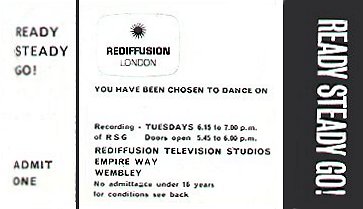Mods |
 |
| The evolution of the Mods
in the mid sixties is the story of how British youth found an optimistic
future in Black American music and Italian fashion and painted it with
a Union Jack. One of the currents of mid-fifties British culture, "Modernists"
were generally either teenagers or young adults with a taste for contemporary
American jazz and European (notably Italian) clothing. These characteristics
set them distinctly apart from patrons of Trad and, at a few outdoor jazz
festivals, fans of these two musics battled each other. The forerunners
of the Mods, Modernists were generally working-class and lower middle
class and, unlike previous generations, they had some disposable income. |
| Although they were a heterogeneous
group, they seem to have held a broad repulsion for Teds. "Moderninsts"
liked Stan Kenton and Miles Davis. Teds liked Jerry Lee Lewis and Carl
Perkins. Modernists identified with things that were new and sophisticated
and were tired of conservative British culture. As the economy gathered
steam and recovered from the dreary days of post-war Britain, they rebelled.
And as the fifties ended and the sixties began, Modernists moved their
musical allegiance towards African-American music. |
| Evolving from Modernists,
Mods moved on from an interest in modern jazz to American r&b and
soul, to French and Italian films, hairstyles, and clothes, and to motor
scooters. They aspired to be dapper and well-tailored, holding regular
daytime jobs to support the clothes habit. Tom Wolfe describes them as
"noonday subversives" because of their noon time dance clubs, coffee bars,
boutiques. They were largely a male phenomenon (although women were also
involved) driven by addiction to "purple hearts" [amphetamine drynamil]
which diminished their sex drive but allowed them to dance for hours by
themselves in ecstatic exhibition. They also had a hierarchy. "Faces"
— the most important mods — set the constantly changing styles
and "tickets" were their mod followers, the masses who copied
the styles week to week. Their ideal mode of transportation was the Vespa
motor scooter, usually festooned with mirrors. |
| Their opposite number, "rockers"
were the successors of the Teddies and wore leather jackets and American-style
cowboy boots and shirts. Their ideal vehicle was a Norton (or Harley-Davidson)
motor cycle. |
| The
Who | The Small Faces |
